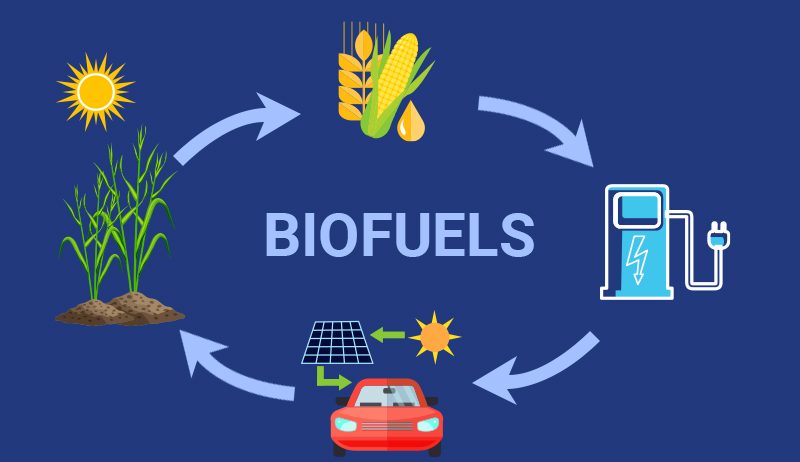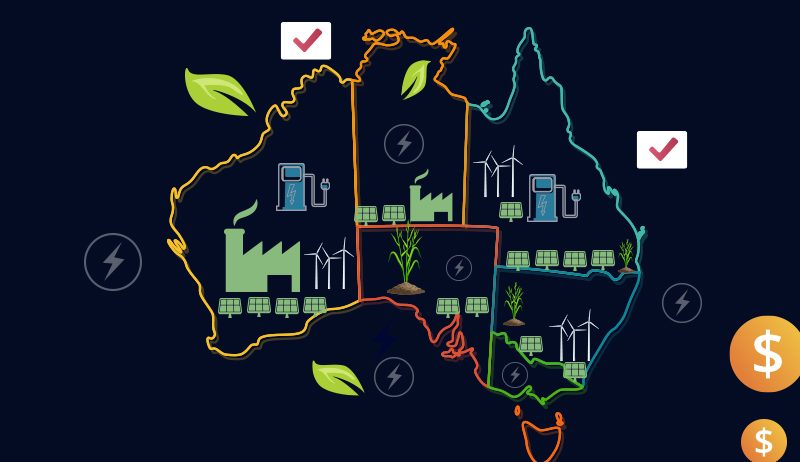As the world deals with climate change and running out of fossil fuels, finding new energy sources is crucial. Biomass is one popular option. It’s made from plants and other living things.
But how is biomass energy as a fuel alternative for Australian businesses? Let’s find out.
Usually, when plants like crop leftovers, trees, or food scraps break down, they let out gases that are bad for the environment.
But with new technology, we can use these leftovers for energy and reduce pollution.
Turning leftover plants into fuel is essential for balancing the amount of carbon in the air. Plants take in CO₂ from the air and turn it into biomass.
When we turn biomass into fuel and burn it, it releases CO₂ back into the air.
But since the CO₂ originally came from the air, it’s a closed cycle that doesn’t add more carbon to the atmosphere. It helps keep carbon levels balanced and reduces the harm caused by greenhouse gases.
What is Biomass Energy?
Bioenergy technologies
Biofuels
Biopower
Bioproducts
How are Biofuels Produced from Biomass?

Biofuels are made from biomass, including plants, wood, and waste from living things.
Here’s how they’re produced:
Growing Biomass: First, we need plants or crops rich in sugars or oils. These plants can be grown on farms just like other crops.
Harvesting: Once the plants are grown, they are harvested, which means they’re cut down or collected.
Processing: After harvesting, the plants are processed to extract the valuable parts. For example, if the plant has a lot of sugar, it might be crushed to get the sugar out.
Fermentation: In some cases, like making ethanol, the extracted sugars are fermented. This means they’re mixed with particular bacteria or yeast that turn the sugars into alcohol.
Distillation: After fermentation, the mixture is distilled, which means it’s heated to separate the alcohol from other parts of the mix.
Refining: The alcohol or other biofuel might need further refining to remove impurities and make it suitable for use as fuel.
Blending: Sometimes biofuels are mixed with regular fuels like gasoline or diesel to create blends that can be used in vehicles.
So, in simple terms, biofuels are made from plants or other living things. These plants are processed to get the valuable parts out, which are then turned into fuel that can power vehicles.
Biomass as A Sustainable Alternative to Energy and Environment
Renewable Resource:
Reduces Greenhouse Gas Emissions:
When biomass is burned for energy, it releases carbon dioxide, but the plants that produce it absorb that same carbon dioxide from the air while growing.
So, burning biomass doesn’t add extra carbon dioxide to the atmosphere like burning fossil fuels does.
Burning biomass produces approximately the same amount of carbon dioxide as burning fossil fuels.
However, fossil fuels emit carbon dioxide captured by photosynthesis millions of years ago, creating an essentially “new” greenhouse gas.
Biomass, on the other hand, emits carbon dioxide offset mainly by carbon dioxide captured during its growth (depending on the amount of energy used to grow, harvest, and process the fuel).
However, studies have found that clearing forests to grow biomass incurs a carbon penalty that takes decades to recover, so it is preferable to grow biomass on previously cleared land, such as underutilized farmland.
Reduces Waste:
Supports Local Economies:
Can Improve Soil Health:
Some biomass byproducts, like biochar, can be returned to the soil to improve quality. This helps crop growth and can even help the soil absorb more carbon from the atmosphere.
Overall, biomass provides a way to produce renewable energy, reduces greenhouse gas emissions, reduces waste, supports local economies, and can even improve soil health. These benefits make it a sustainable alternative to traditional energy sources.
Implementation of Bioenergy in Australia

In Australia, many businesses are starting to use bioenergy, which is energy made from plants, wood, or waste.
Here’s how they’re implementing bioenergy and why it’s important:
Farming Biomass:
Using Waste:
Generating Electricity:
Reducing Carbon Footprint:
Opening New Employment Market:
Government Incentives:
Innovative Solutions:
Some businesses are exploring innovative bioenergy solutions, such as using algae to produce biofuels or capturing methane from landfills for energy. These technologies have the potential to reduce greenhouse gas emissions further and create new economic opportunities.
Overall, implementing bioenergy in Australian businesses helps reduce reliance on fossil fuels, lowers emissions, creates jobs, and supports sustainable development. It’s an essential step towards a cleaner and more sustainable energy future.
Biomass Utilization for Australian Businesses
In Australia, there are different ways to use biomass, which is energy made from plants, wood, or waste.
Here are some simple explanations of how biomass is used:
Burning Biomass:
Turning Biomass into Fuel:
Gasification:
Anaerobic Digestion:
Pyrolysis:
Pyrolysis involves heating biomass without oxygen to produce bio-oil, syngas, and biochar. These products can be used for energy or other applications.
These biomass utilization technologies help Australia produce renewable energy, reduce waste, and lower greenhouse gas emissions. They’re essential for creating a more sustainable energy future.
Energy Potential of Waste

Bioenergy is renewable energy made from materials like leftovers from farms, food factories, and forests, as well as household and industrial waste. It’s important because it can help us recycle materials and provide energy from waste products.
Some examples of biomass materials include leftovers from farming and food production.
Modern plants turn waste into energy in places like Europe, East Asia, and the United States. These plants are clean, work well, and can help reduce the gases that cause climate change.
Some of these plants use a process called gasification. It changes biomass and waste into a gas called synthesis gas. This gas can then be used to make other useful things like fuels for vehicles or fertilizers.
We have an excellent opportunity to make bioenergy even better in Australia. It can help us use cleaner energy and recycle more while still providing reliable electricity and reducing the amount of waste we throw away.
Contact Cyanergy for any commercial renewable energy solutions. Talk to an expert today!







